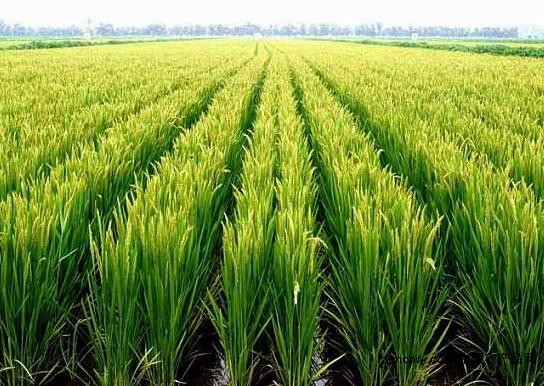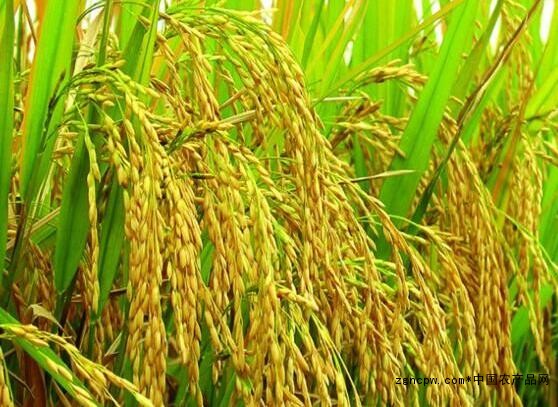[Agricultural Products Network] The selenium-enriched rice that we sell on the market today is basically realized through agricultural technology. In fact, there are also natural selenium-enriched rice. Natural selenium-enriched rice first requires selenium in the local soil. For example, the world's selenium is - Hubei Enshi, China Selenium - Guigang, Jiangxi Fuyang, Shaanxi Ziyang and Sichuan Wanyuan. The purity of selenium in the soil in these places is high. In general, the total output is relatively low and cannot meet the needs of the market and consumers.

Therefore, what we call selenium-enriched rice is artificially supplemented with selenium. Selenium-enriched rice is supplemented with selenium by adding selenium when planting rice. Thereby, rice rich in selenium is grown. It is a functional agricultural product and is a food rich in selenium with high nutritional value.
Selenium is an indispensable trace element to maintain the normal function of the human body. Selenium deficiency in the human body can lead to various diseases. Modern scientific research proves that selenium has anti-oxidation, enhances human immunity, effectively removes harmful garbage, promotes human health, and delays aging.

How is selenium-enriched rice grown? So, to sum up, there are two basic ways to produce selenium-enriched rice.
The D1 method is to uniformly apply the selenium-enriched yield-increasing agent to the foliar sprayer in the morning and evening of the sunny day, and then convert the inorganic selenium into organic selenium by biotransformation and store it in rice. Absorbed in the body.

The second way is to use the local soil rich in selenium, through the natural selenium, is the production of natural selenium-enriched rice.
Selenium-enriched rice grows rich in rice by adding selenium when planting rice.

72% of the country is in areas with selenium deficiency or low selenium, and there are insufficient selenium intakes in different populations of 2/3 or more. People with selenium deficiency can cause cardiovascular disease, high blood pressure, liver disease, myopia, asthma, cancer, cancer, etc.
Information shows that selenium is an indispensable trace element in the human body. It is an important component of glutathione peroxidase, an antioxidant in red blood cells. Adequate selenium can promote glutathione peroxidase to effectively convert hydrogen peroxide into water. Selenium is also a disproportionation of peroxidation. The enzyme component, which eliminates free radicals and maintains normal levels of catecholamines involved in blood pressure regulation; in addition, various enzymes containing selenium regulate thyroid work and participate in the synthesis of amino acids and sperm tail proteins.
The lack of selenium in the human body will lead to the decline of the above-mentioned human functions. Recent statistics show that when the human body is deficient in selenium, the risk of infection with highly pathogenic viral diseases is significantly increased.
Selenium is a rare and dispersed semi-metallic chemical element between metal and non-metal. The element symbol Se, the World Health Organization declared in 1973 that selenium is an essential trace element in human body. Selenium is an oxygen element. There is very little selenium in the natural crust. Selenium is divided into inorganic selenium and organic selenium. Inorganic selenium is contained in minerals. It is insoluble in water. It is not easy to accept and has toxic side effects. Western countries have banned use, and organic selenium just makes up for the deficiency of inorganic selenium.
More than 40 diseases in humans are associated with selenium deficiency, such as cardiovascular disease, cancer, peptic ulcer, diabetes, hepatitis, myopia, cataract, male malnutrition and child malnutrition.
There are more than 40 countries in the world that lack selenium. In China, 72% of the country lacks selenium, and there are 22 selenium-deficient provinces. The selenium-deficient population is more than 700 million, especially in the southeastern coastal areas.
Lack of selenium has seriously threatened the health of our nationals. Therefore, most people need to make up the amount of selenium.
This is also the reason why selenium-enriched rice has a broad market space. When consumers consume, try to choose the agricultural brand rice. Some selenium-rich rice may not be rich in selenium, and consumers cannot identify it.
4 Wire Video Intercom System,Analog 4 Wire Intercom System,4 Wire Video Doorbells,Doorbell System For Villa,4 Wire Intercom Door Phone
Zhuhai Mingke Electronics Technology Co., Ltd , https://www.mingke-tech.com